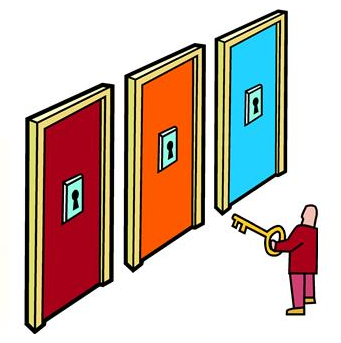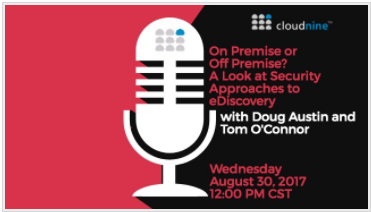When You Have a Lot of Custodians, Life Can Be a Batch: eDiscovery Best Practices
After Tom O’Connor and I hosted the webcast On Premise or Off Premise? A Look At Security Approaches to eDiscovery where we discussed the pros and cons of on premise and off premise (i.e., cloud) solutions last month (click here to check out the recording of it), I received a question from an attendee afterward, as follows: Isn’t another advantage of on premise solutions the ability to load large amounts of data from multiple custodians (i.e., multiple terabytes) to the eDiscovery platform?
Not necessarily. For starters, not all cloud solution architectures are the same. There are public cloud and private/protected cloud alternatives. With a public cloud solution, the servers are controlled by the cloud provider (such as Amazon Web Services or Microsoft Azure), not by the eDiscovery provider. Those servers could be located anywhere (even internationally), so loading data would typically be through File Transfer Protocol (FTP) or Secured File Transfer Protocol (SFTP) and would be reliant on your bandwidth and the bandwidth of the cloud provider. Loading multiple terabytes to a public cloud solution could be extremely time consuming, perhaps excessively so.
In a private/protected cloud alternative, the servers are located in a data center controlled by the eDiscovery provider (and probably close by their offices). To load multiple terabytes in that scenario doesn’t require FTP or SFTP, the provider can actually connect a drive provided by the client and copy the data up. So, that is an alternative that can be essentially as fast as that of an on premise solution (because it is essentially on premise once the drive is received by the provider).
Does that mean it’s impossible to load large amounts of data to a cloud eDiscovery solution? Not at all, if you effectively manage the data loading in multiple batches. At CloudNine (shameless plug warning!), I can recall at least two recent clients within the past year or so that had a case with numerous (i.e., more than a hundred) custodians and those clients needed to get email stores (which had been exported out to Outlook PST files) loaded into our platform. Because clients can load their own data (and because they didn’t check with us to see if there were faster alternatives), these two clients proceeded to load the data for their numerous custodians in multiple batches. Because the load process is multi-threaded, they could have multiple batches going at once.
Each of the two collections was in excess of 3.5 terabytes (one was nearly 4 terabytes, at 3.92 TB), yet both clients were able to effectively get their data processed and loaded to get started on searching and review within their required time frame.
So, when considering eDiscovery solution alternatives that include cloud based solutions, it’s important to understand which are public cloud solutions and which are private/protected cloud solutions and what that means to you. It’s also important to understand how data can be processed and loaded and whether the load process is multi-threaded. And, it’s important to understand the pros and cons of on premise and off premise solutions to help you decide (Tom and I covered both in the webcast linked to at the top of the post). Depending on your requirements, a combination of both on premise and off premise may be appropriate to meet your needs.
So, what do you think? Do you use on-premise, off-premise or a combination for your eDiscovery solution(s)? Please share any comments you might have or if you’d like to know more about a particular topic.

Disclaimer: The views represented herein are exclusively the views of the author, and do not necessarily represent the views held by CloudNine. eDiscovery Daily is made available by CloudNine solely for educational purposes to provide general information about general eDiscovery principles and not to provide specific legal advice applicable to any particular circumstance. eDiscovery Daily should not be used as a substitute for competent legal advice from a lawyer you have retained and who has agreed to represent you.









